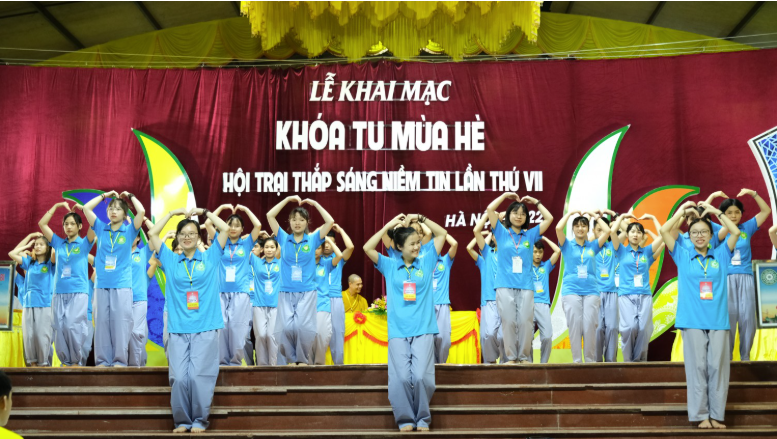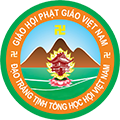History of Khai Nguyen Pagoda (Doai Phuong Commune, Hanoi, Vietnam)

Note: Khai Nguyen Pagoda and Tan Vien Pagoda are two distinct pagodas, though they share the same abbot and administration. Tan Vien Pagoda is situated within Ba Vi National Park in Ba Vi District. We sincerely hope that everyone will carefully research this information to avoid confusion between the two pagodas. This clarification is necessary as some articles on personal pages, as well as vlogs and videos, have been confused. Their creators, without seeking direct information from the pagoda's information department, have presented details about both locations as if they all belong to a single Khai Nguyen Pagoda. This misleads readers and viewers who have not yet had the chance to learn about Khai Nguyen Pagoda in detail.
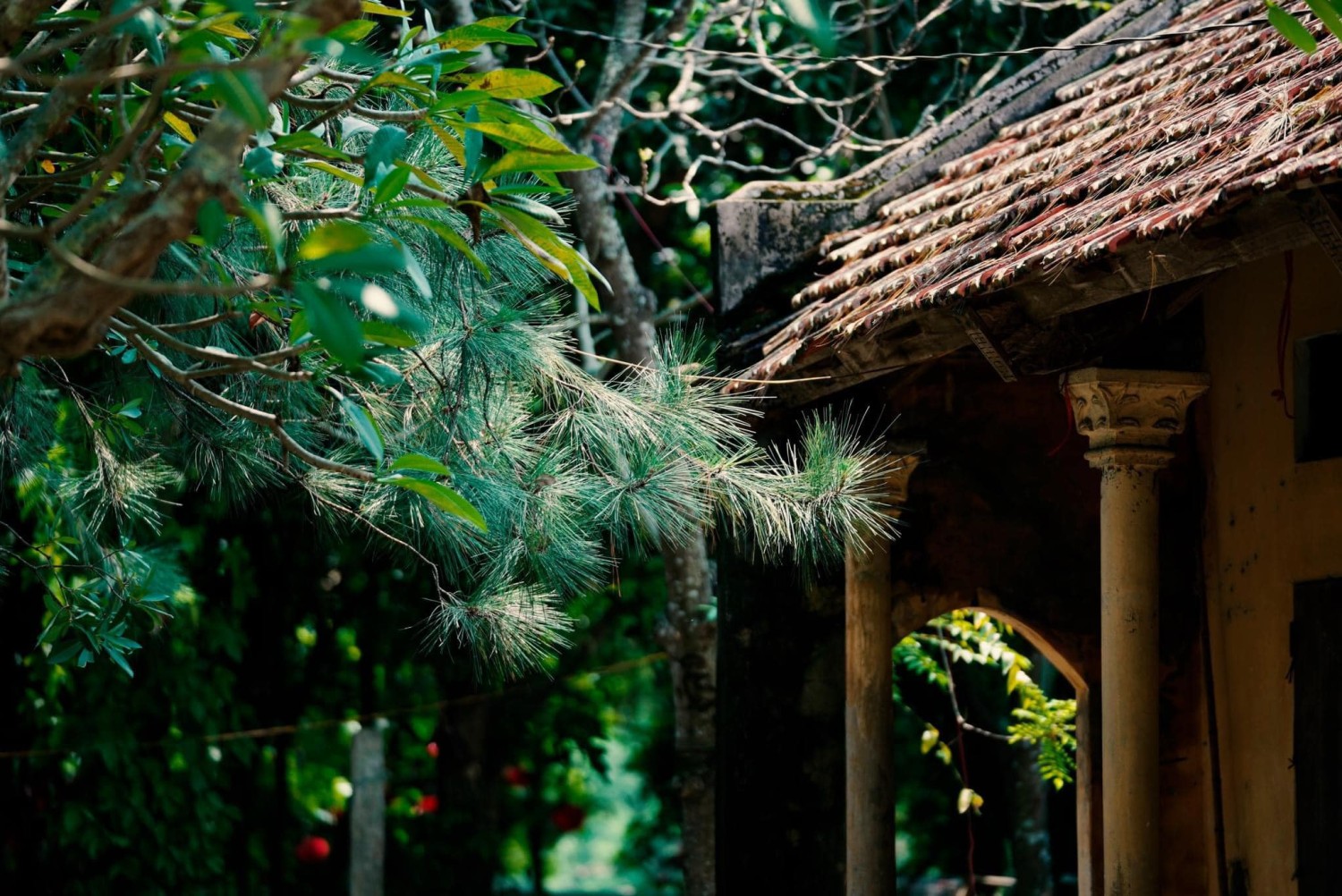
In the year 1759, under the order of Headman Phung Cuong Dinh, residents and Buddhist devotees from all directions came to restore the pagoda and cast a great bell for veneration. Thanks to the support of the Headman of the Phung clan, the people donated a great deal of money and land to expand the pagoda's premises and establish a worship and maintenance fund (encompassing the entire Cheo Pagoda hill and the Cheo field, approximately 9-10 hectares). Due to a long period without an abbot for management, the pagoda's landscape fell into severe disrepair. From 1964 to 1985, a large portion of the pagoda's land was taken over by the village's Elderly Association and the Tay Ninh Cooperative for cultivation. In 1981, with the consent of the local authorities, more than ten village elders raised funds from the people and devotees to repair the roof and repaint the statues in the pagoda. After 1985, most of the pagoda's land was divided among local households for growing crops and rice, leaving the Pagoda with only about 5,000m². By 1990, the Son Dong Cooperative continued to allocate land to the Women's Union for fundraising purposes. Consequently, the pagoda's inner land was reduced to just over 1,000m². At this time, the pagoda was seriously degraded and almost became a ruin.. Of the entire once magnificent, majestic, and splendid monastic complex, all that remained were the five main sanctuary halls for Buddha veneration and a three-compartment kitchen.
In 2003, with the consent of the authorities at all levels and upon the invitation of the local people and Buddhist devotees, the Executive Committee of Vietnamese Buddhist Sangha in Ha Tay Province, appointed the Venerable Thich Dao Thinh to assume the role of abbot, responsible for overseeing, developing, and serving the spiritual life of the Pagoda. With his prestige and the devotion of a true disciple of the Buddha, Venerable Thich Dao Thinh mobilized various organizations, and the people voluntarily and joyfully donated back the Pagoda's former lands. This was done to prepare a formal proposal, documentation, and plan to petition the relevant authorities of Hanoi City for permission to expand the Khai Nguyen Pagoda's premises. The goal was to restore, renovate, and redevelop the pagoda's landscape to meet the learning and practice needs of the monks and nuns, as well as Buddhist devotees from all directions.
From the time Venerable Thich Dao Thinh became abbot until the present (2024), organizations such as the Women's Union and the Elderly Association, along with households that had been allocated land for cultivating crops, growing rice, raising grass, and fish farming, have all voluntarily returned their land-use rights to the Commune People's Committee and the Pagoda. This enabled the Pagoda to prepare the necessary documentation and plans, submitting them to the competent authorities of Hanoi City for review, approval, and construction licensing following state regulations.
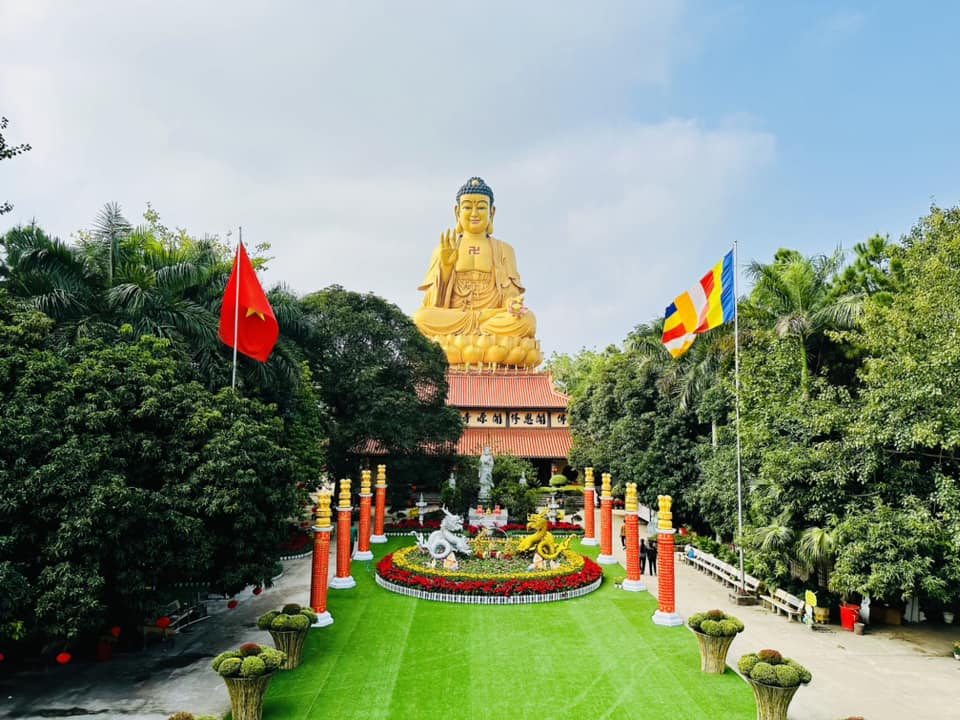
Beginning in 2006, Khai Nguyen Pagoda received permission from the Son Tay Town People's Committee to begin restoration. After more than ten years of development, the Pagoda has now completed several major structures, including: the Main Hall, Stupa, the Guest House, the Buddhist Library, The Hall of Ksitigarbha Bodhisattva, the printing house, the Dharma Assembly Hall, the Monks' Quarters, the Liberation Pond, and a Bell Pavilion. Projects currently under construction include: the Three-Entrance Gate, the Great Statue of Amitabha Buddha for World Peace, a Multi-purpose Hall, and several other ancillary structures.
Since 2015, Khai Nguyen Pagoda has become a familiar destination for a great number of Buddhist devotees from all directions and people from across the country. Annually, the Pagoda organizes Dharma study retreats for monks, nuns, and lay followers from all over, with each retreat attracting thousands of participants. Particularly noteworthy are the short-term retreats designed for young people, students, and university students. These courses are often combined with volunteer and humanitarian programs, such as blood donation and charitable activities.
Through each retreat, thousands of young people have changed in positive ways. They have become more well-behaved and polite, learned to respect their elders and be considerate to those younger, to love and care for their friends, and to abandon unwholesome actions in favor of wholesome ones. Most importantly, they have become conscious of the beautiful, traditional moral values of our nation. Most importantly, they have become conscious of the beautiful, traditional moral values of our nation, applying them in their daily lives and thus contributing to the long-term social welfare of the country.
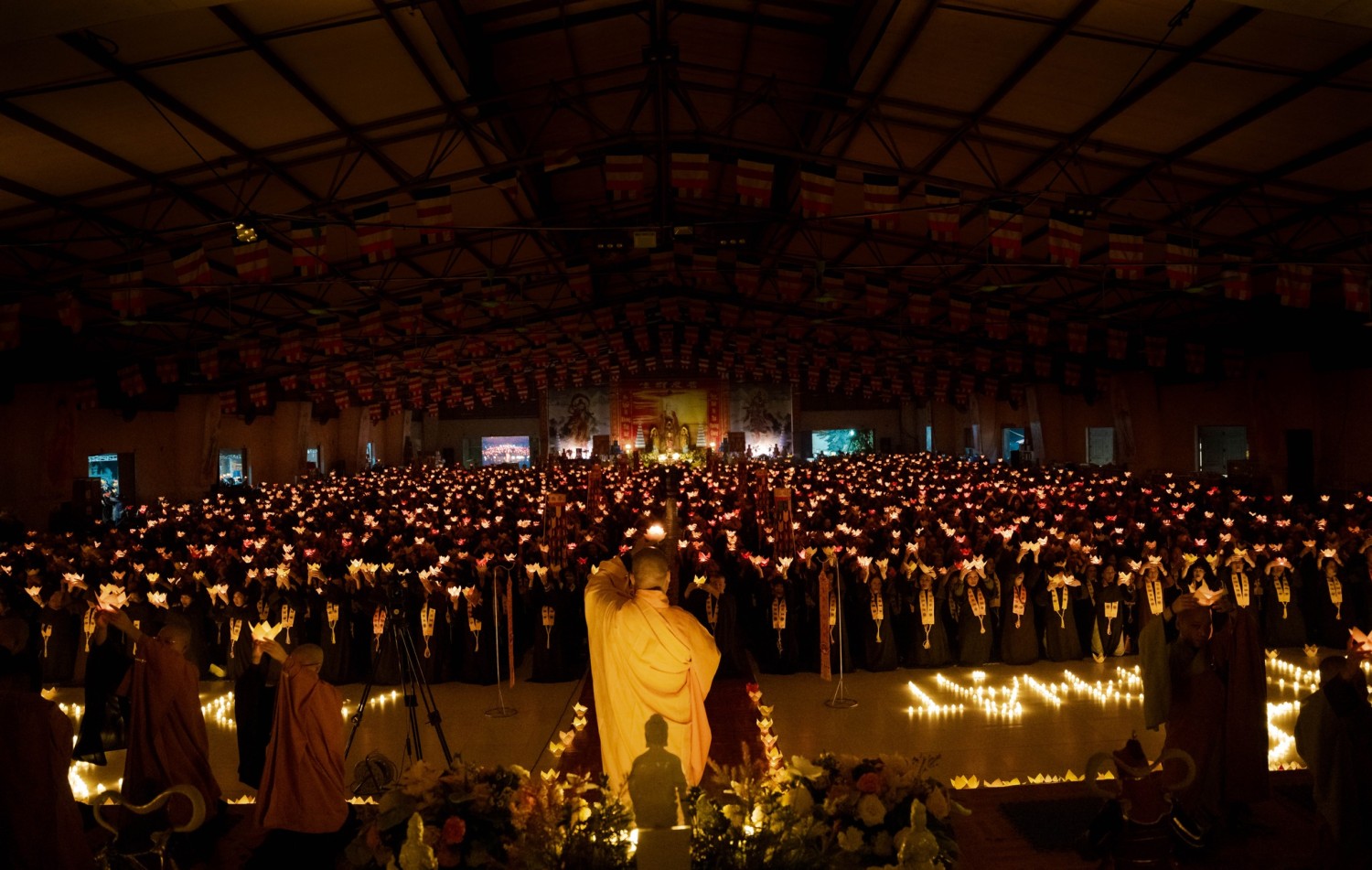
To meet the needs of serving the faithful, as well as to propagate the Dharma for the benefit of all beings in the Buddhist spirit of compassion and deliverance from suffering, the Venerable Thich Dao Thinh has requested permission from the authorities of Son Dong Commune to formulate a comprehensive design proposal and master plan. This plan is to be submitted to the competent authorities of Son Tay Town and Hanoi City for approval and licensing, in strict accordance with state regulations governing the procedures and formalities for the construction and management of religious worship structures.
Below are several images capturing the activities at Khai Nguyen Pagoda in 2022:
An overall view of Khai Nguyen Pagoda as seen from the entrance.
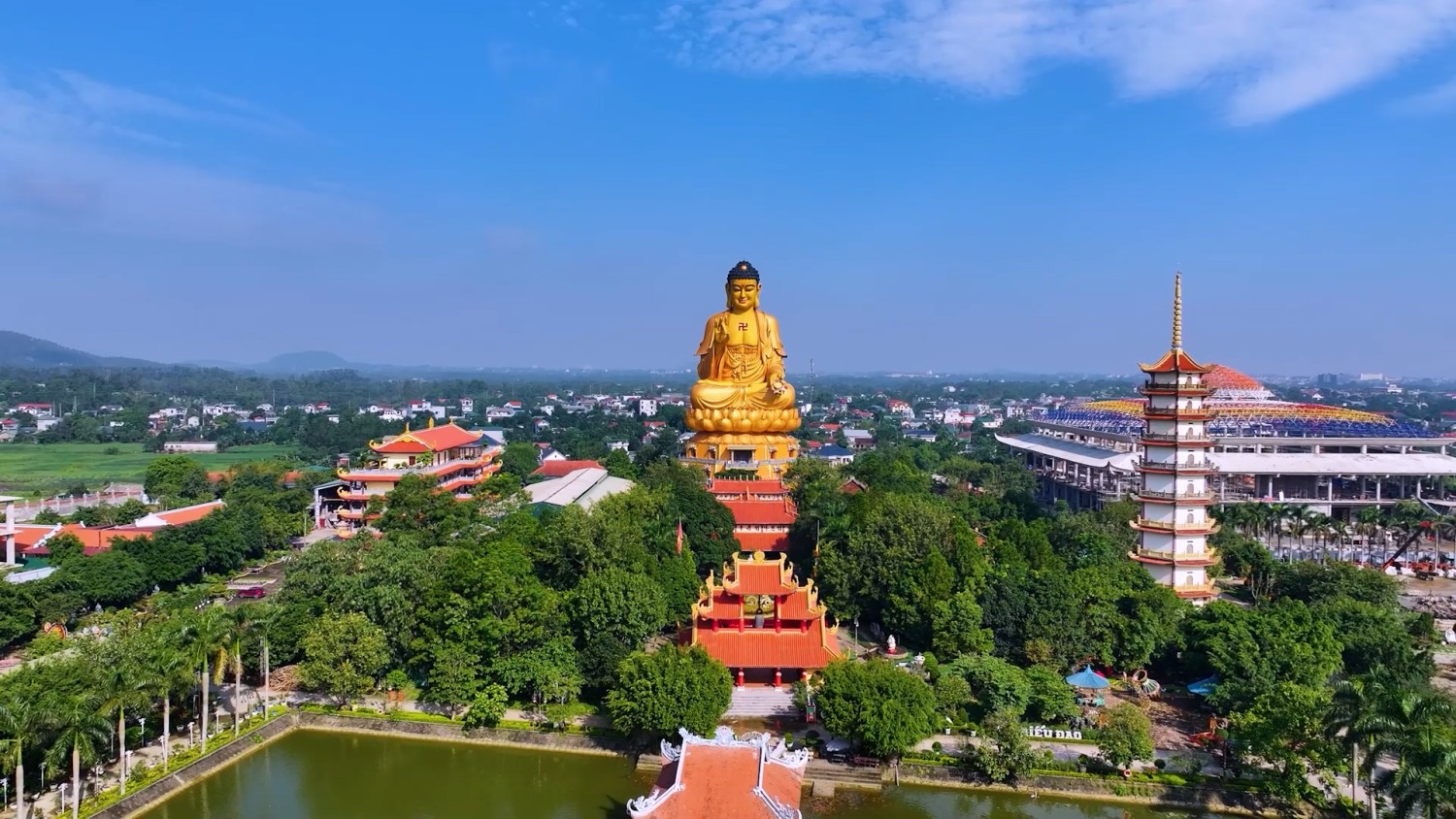
The bell pavilion roof at Khai Nguyen Pagoda features architectural patterns deeply influenced by the Ly Dynasty.
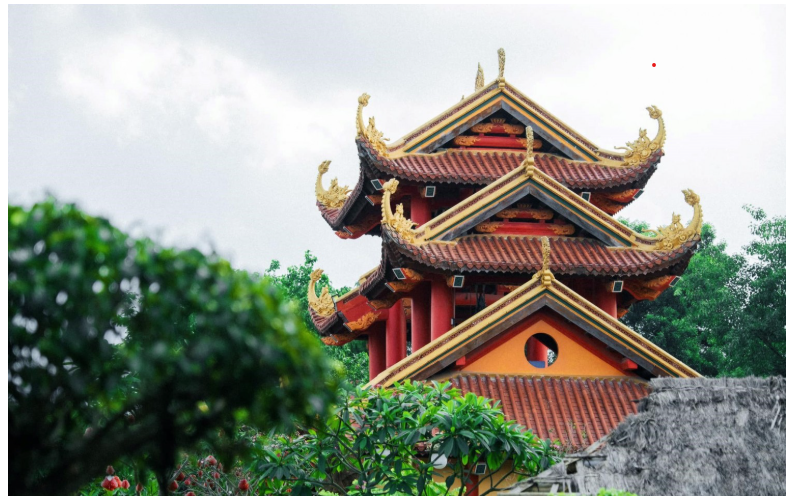
The Hall of Ksitigarbha Bodhisattva, featuring a one-pillar architectural design, is situated amidst the liberation pond within the pagoda's grounds.
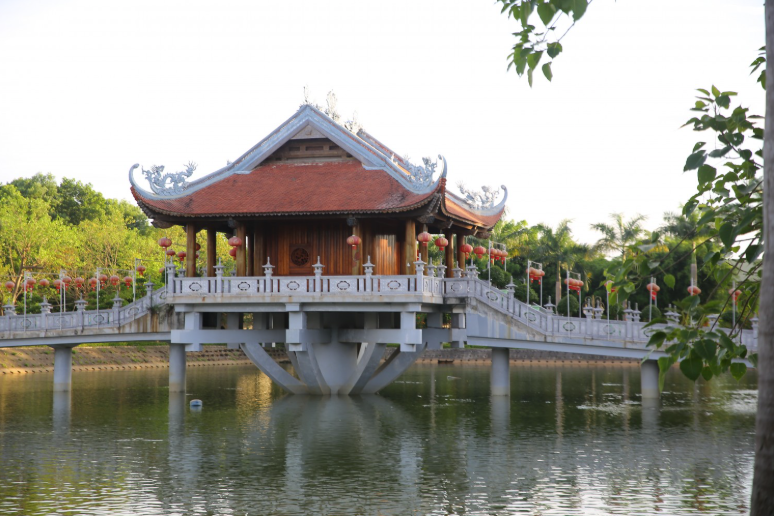
The Great Statue of Amitabha Buddha for World Peace
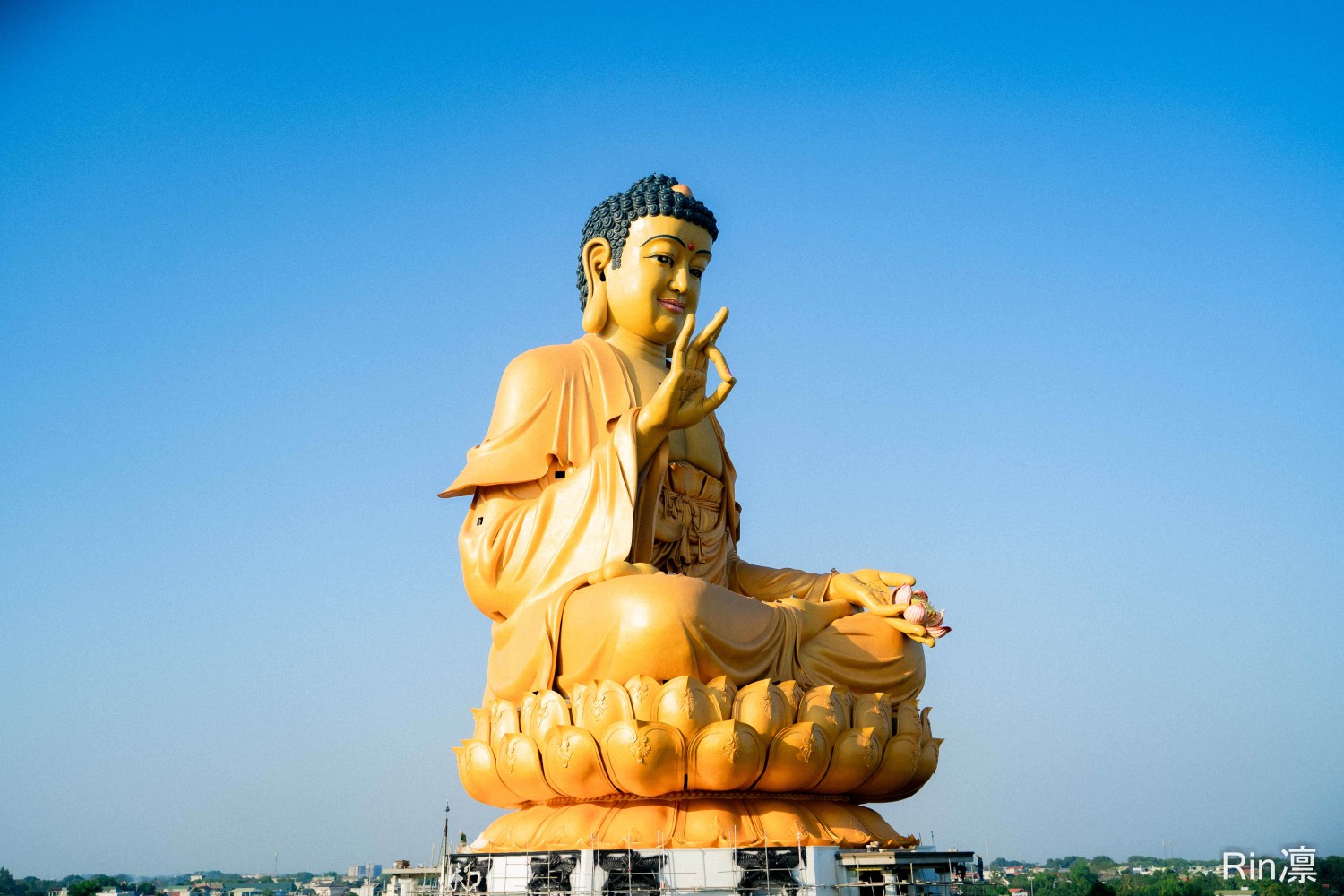
Khai Nguyen Pagoda is renowned for its multitude of Buddha statues, many of which are crafted from precious materials such as jade, wood, and bronze..
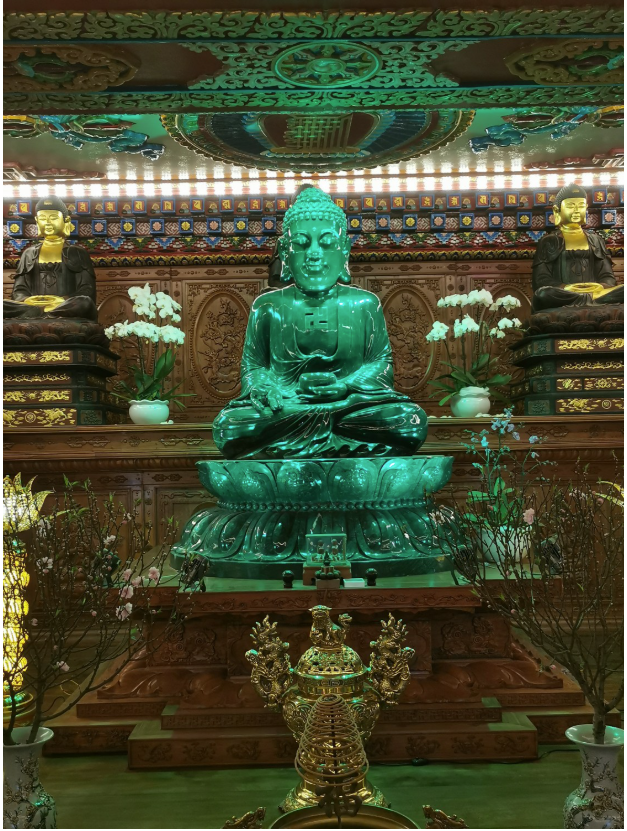
The heart of the statue, crafted from Canadian Jade, is enshrined on the 11th floor, a place of great sanctity and special significance within the Great Statue of Amitabha Buddha for World Peace.
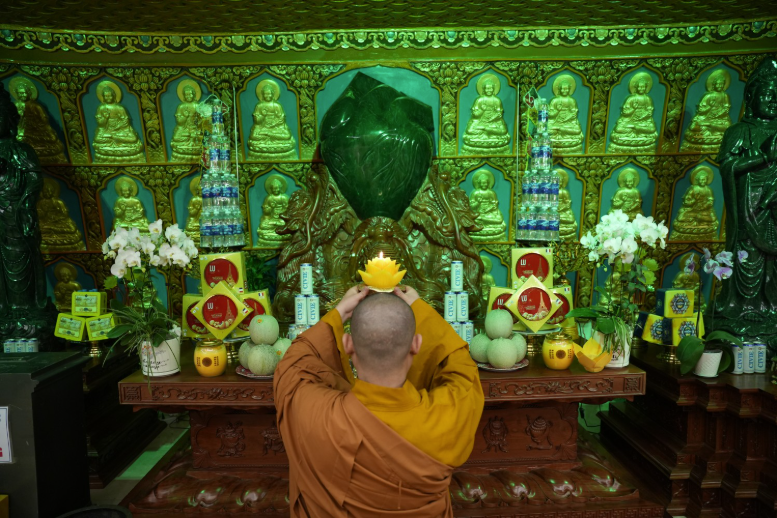
Dharma assemblies with the presence of thousands of lay Buddhists
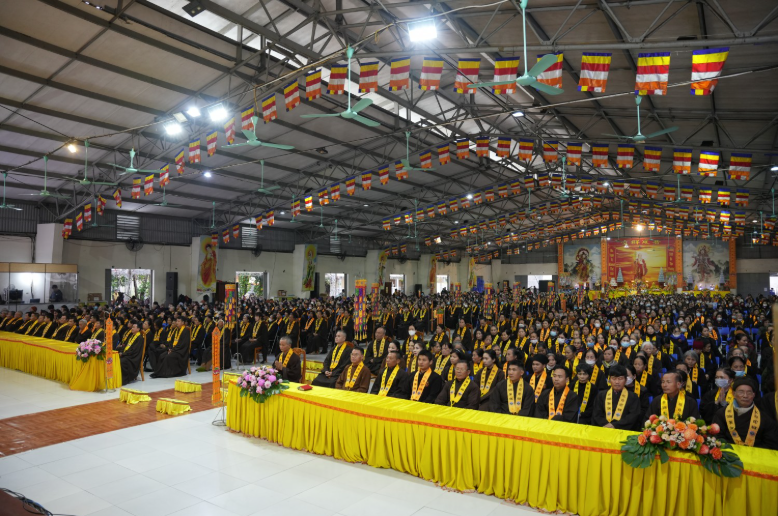
The pagoda regularly organizes and maintains these short-term retreats for young people
